Working with Dimensions data in CiteSpace
CiteSpace allows users to analyze bibliographic records from Dimensions in two ways: 1) Advanced DSL (an integrated search interface in CiteSpace) and 2) Convert search results exported from a search on Dimensions.
1) Use the Integrated Search Interface in CiteSpace
CiteSpace: Data > Import/Export > Dimensions > Advanced
The first option is flexible and suitable if you are familiar with the DSL query language. It is also the way to use Cascading Citation Expansion functions.
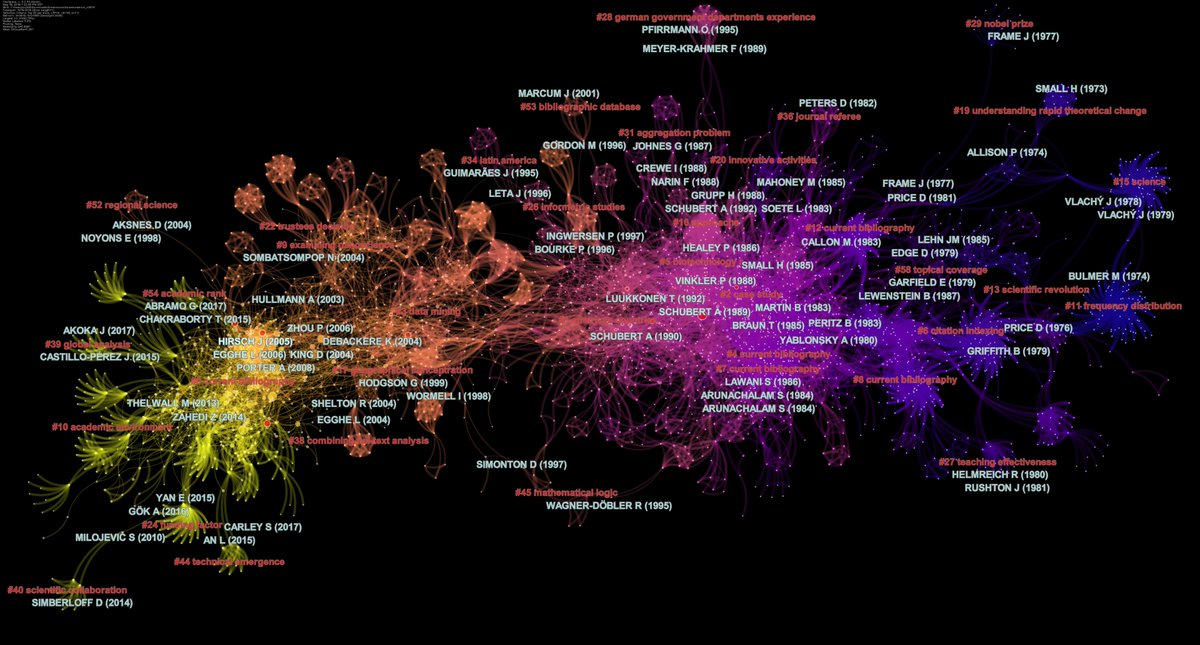
This is a direct DSL search for publications in the journal Scientometrics.
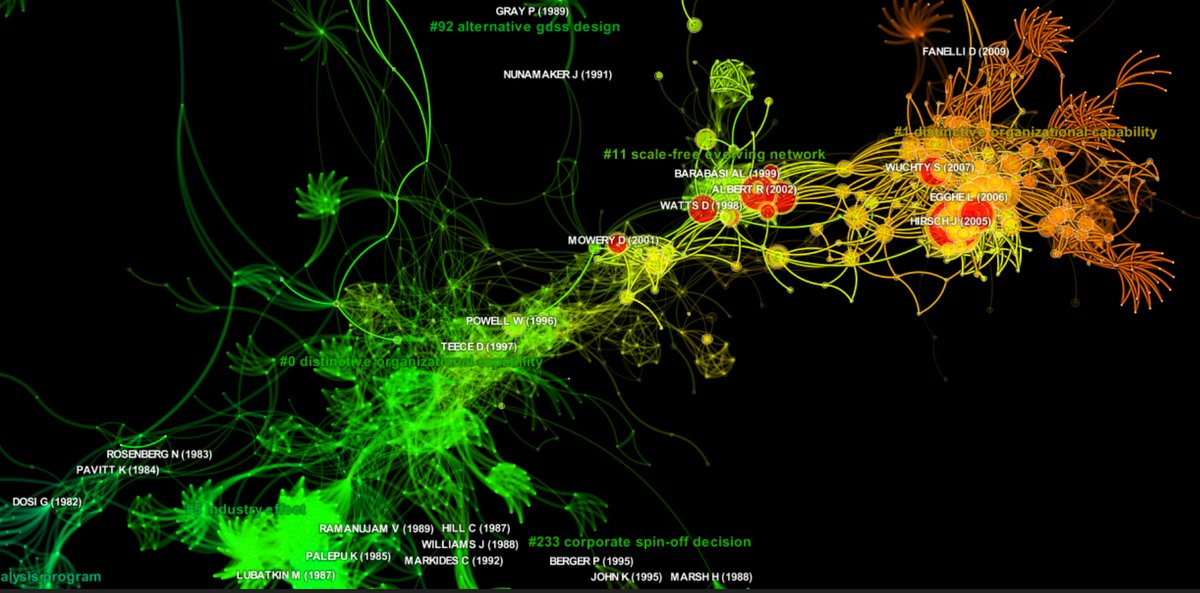
This is a local view of a network generated with cascading citation expansion. Links in the green areas are more blurry than links in the orange areas. The more prominent links are from the original search and the less prominent ones, i.e. the blury ones, are resulted from the cascading citation expansions, indicating they are beyond the scope of the original search.
Chen, C. (2018) Cascading Citation Expansion. Journal of Information Science Theory and Practice 6 (2), 6-23.
https://www.researchgate.net/profile/Chaomei_Chen/publication/325581679_Cascading_Citation_Expansion/links/5b1709c345851547bba32a98/Cascading-Citation-Expansion.pdf
2) Use the Batch Export from the Export Center
The second option is simple and straightforward. You should probably start it from here if you are not familiar with the DSL query language or do not need to use cascading citation expansion functions.
2.1 Search and download the CSV file
2.2 Data > Import/Export > Dimensions > Convert CSV to WoS
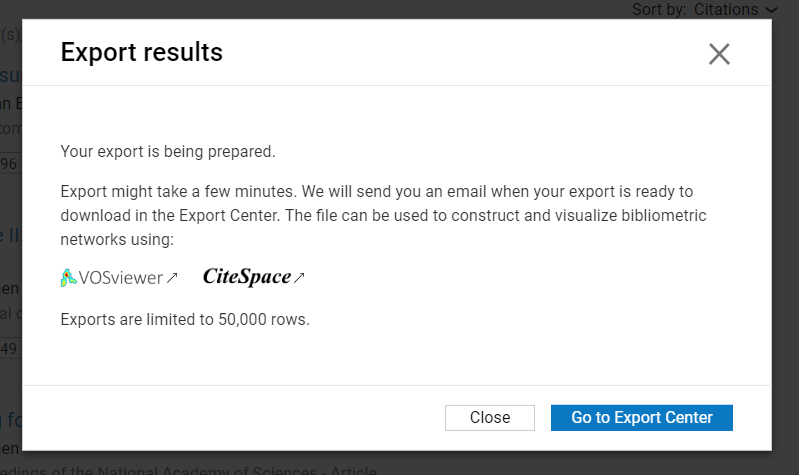

Download the search results in a CSV format.
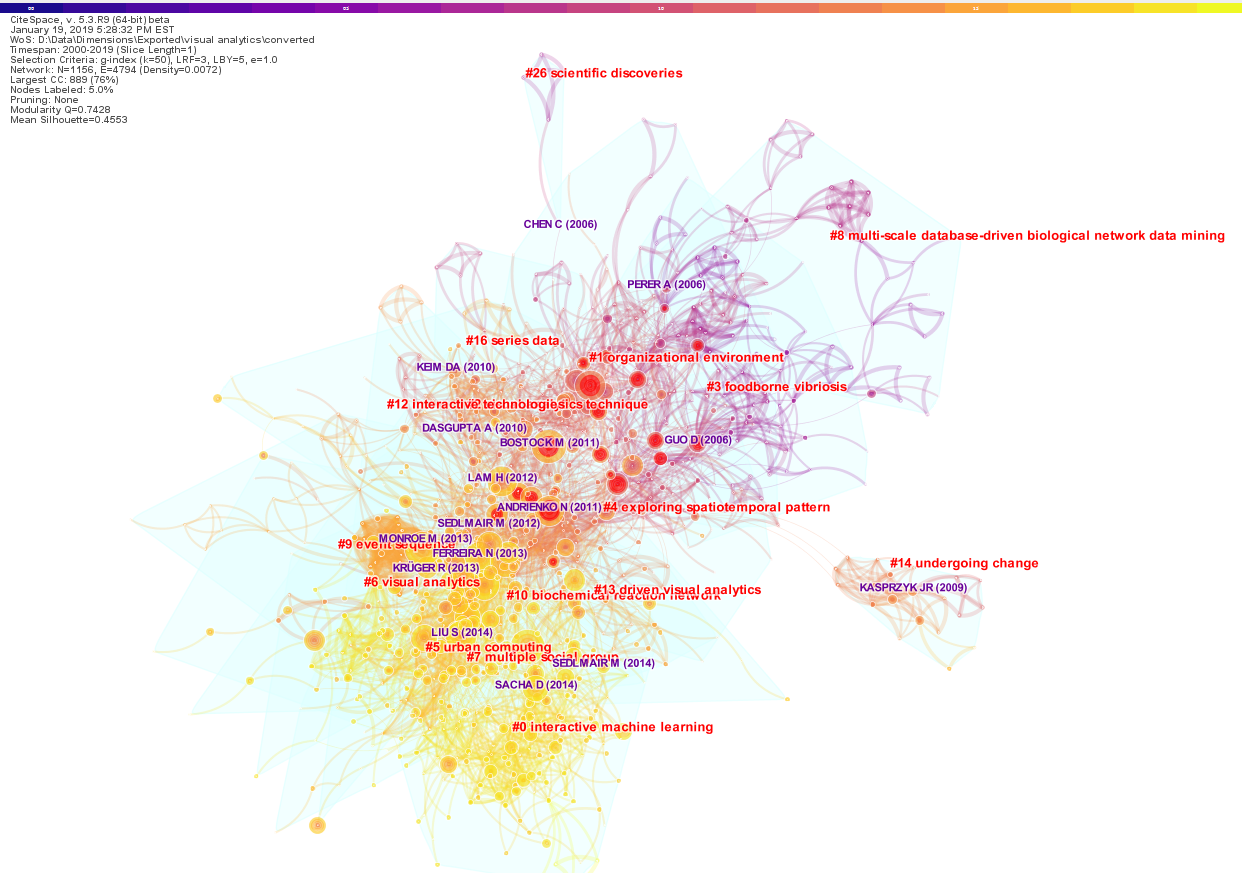
This is a network of co-cited references based on a search for "visual analytics" on Dimensions. The data file is exported in CSV and converted in CiteSpace: Data > Import/Export > Dimensions.
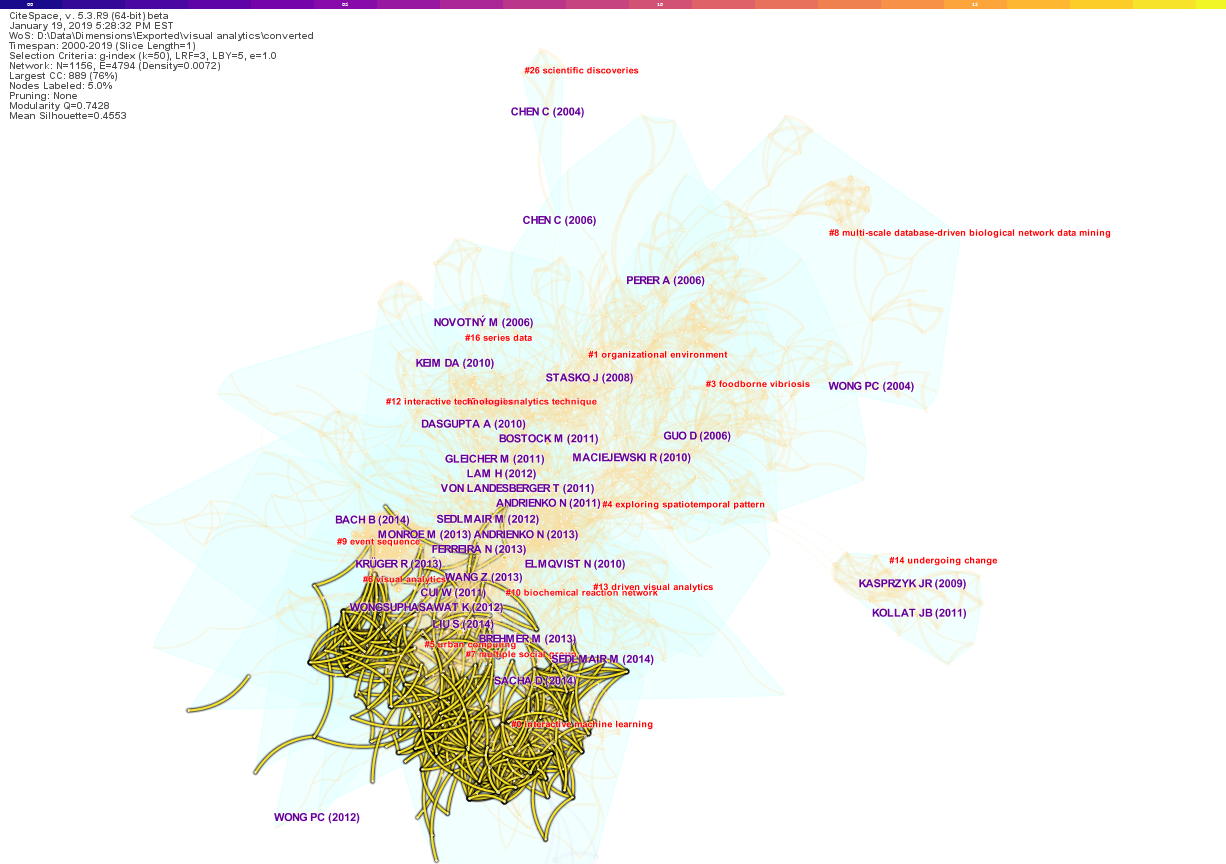
This is the same network with a link walkthrough. The highlighted links are added by articles published in 2018. The link walkthrough allows the user to step through the network one year at a time.
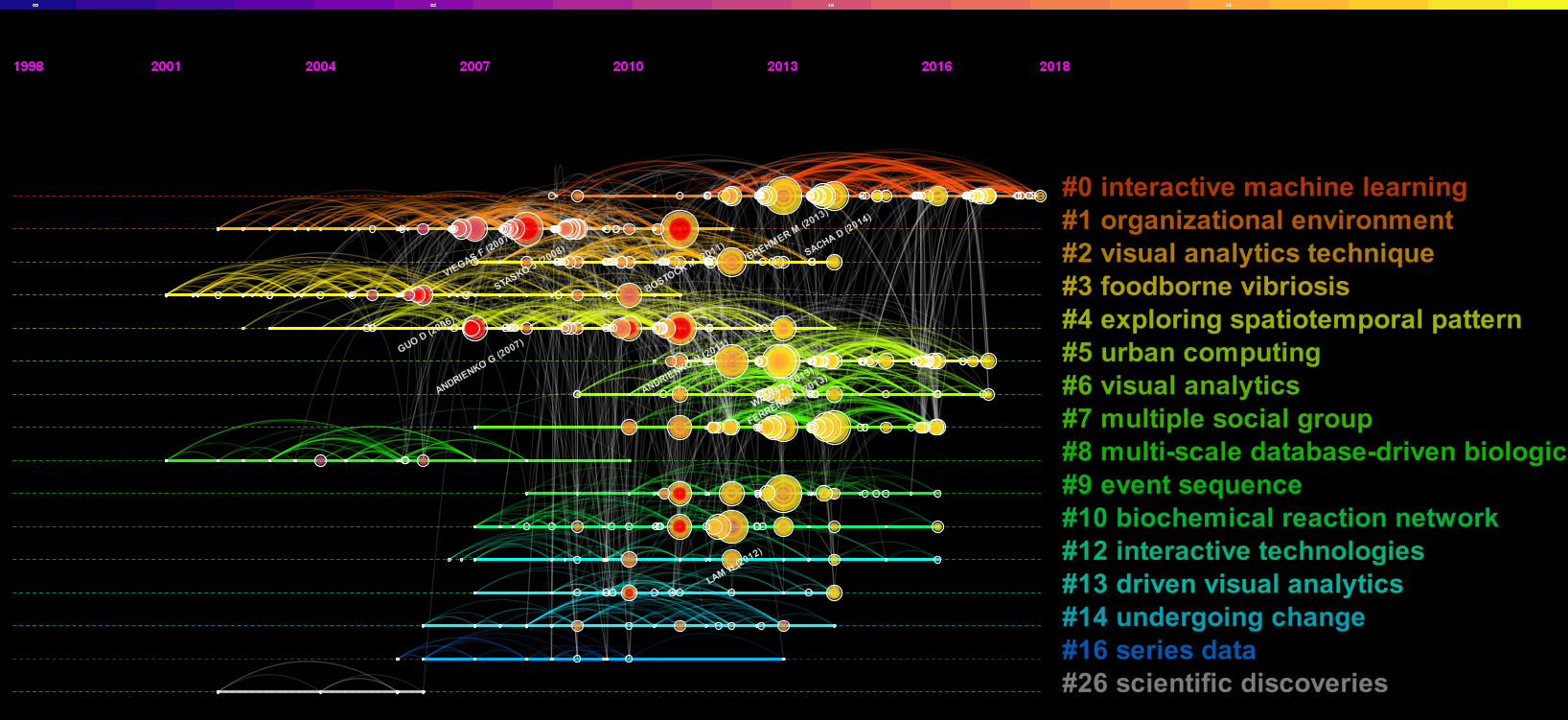
This is the timeline visualization. References with strong citation bursts are shown with red rings and their corresponding labels. The time flys from the left to the right.

This is a peek of a visualization of the result of a full data search on Dimensions.

This is a network of noun phrases extracted from the titles of publications exported from a full data search for 'CitepSpace' on Dimensions. The saved visualization (.viz) file can be viewed with CiteSpace (Visualization > Open Saved Visualization).
Data Source: Dimensions
Search: CiteSpace (full data)
CiteSpace Version: 5.3.R9
Timespan: 2004-2019
Selection Criteria: Top 50 per slice, LRF=3, LBY=8, e=1.0
Network: N=2059, E=2192
Q: 0.9283
S: 0.6698
See also a blog by Stacy Konkiel at
here: https://www.dimensions.ai/2019/01/2018-dimensions-research-roundup and
here: https://www.dimensions.ai/2019/02/new-dimensions-data-and-features-for-scientometrics-analysis/


Hi Dr. Chen,
I have been following your work for years and was inspired by your latest article in JISTaP to try out the new Dimensions functionality in CiteSpace. I have even purchased your eBook "How to Use CiteSpace" so as to follow your approach step-by-step.
I am encountering a problem and I am hoping you can help. I have added my DimensionsUser and DimensionsPass to the System Variables. However, querying the DSL API via the CiteSpace Data Processing Utility always returns an empty result. I have successfully queried https://app.dimensions.ai/api/dsl.json from a Python app, so I know my username/password are valid.
The result is always the same:
References in Total: 0
Valid References: 0 (0%)
Files saved at: C:\Users\jdema\OneDrive\Desktop
API requests: 0
<<<
Could it be something to do with the Time Span? Any suggestions on getting CiteSpace (I'm using version 5.3.R4) to connect to Dimensions?
Much appreciated,
-Jeff Demaine
SOLVED:
This issue is fixed in the latest version (5.3.R9). The "Advanced Search" for Dimensions works great!
-J
Thanks for letting me know!